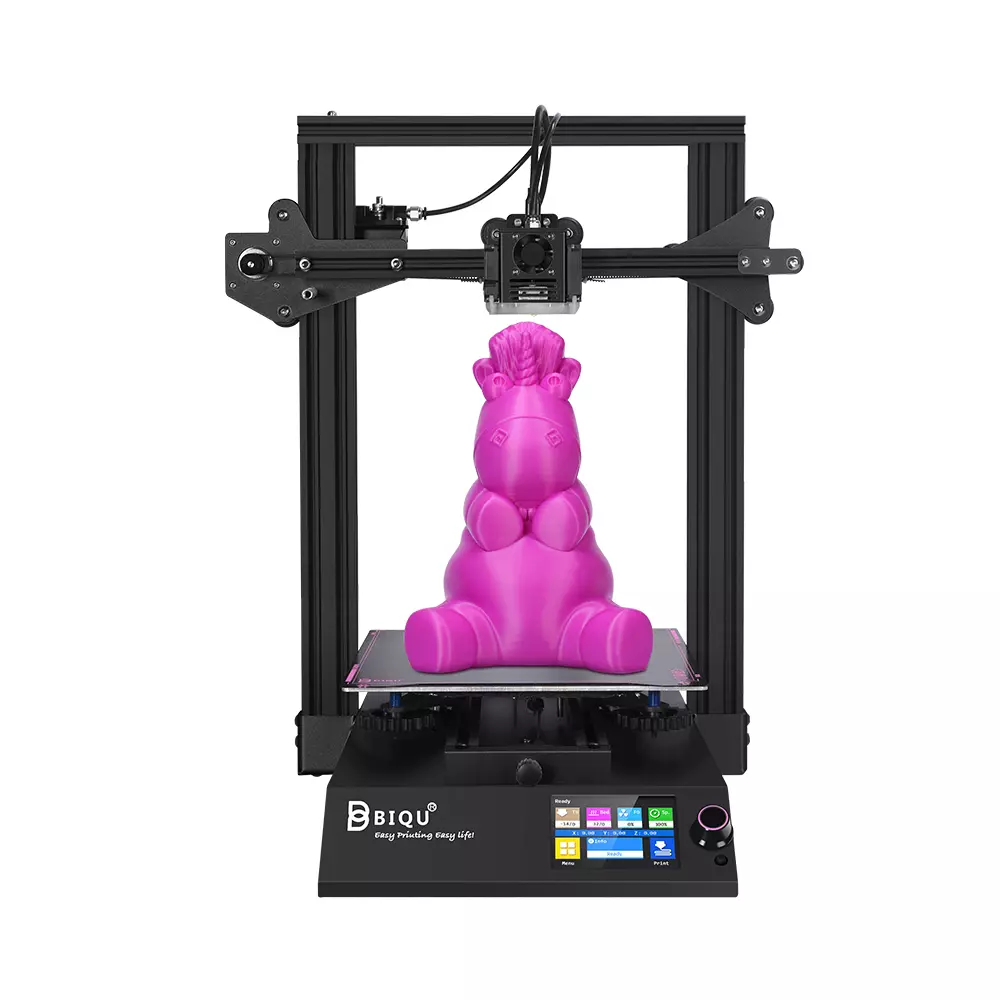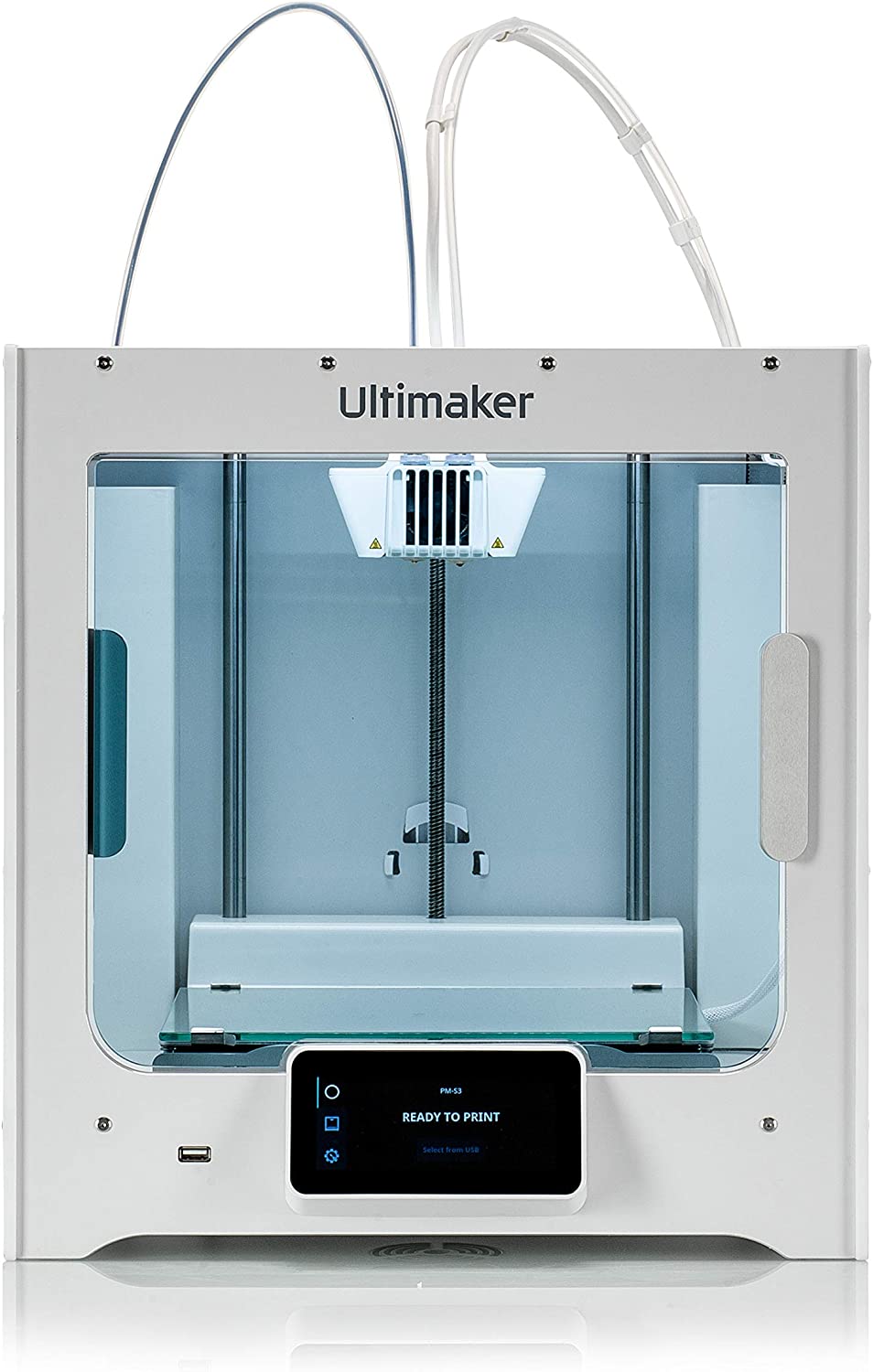Compare BIQU B1 vs S5
Comparison between the best 3D printers
Choose the best 3D printer at the best price. The cheapest 3D printers are here.
Buy a 3D printer here with 3D Fila.
 |
 |
|
| Model | BIQU B1 |
S5 |
| Printing Material | Filament | Filament |
| Buy Filament for BigTreeTech BIQU B1 | Buy Filament forUltimaker S5 | |
| Estimated price | $269,00 | $6950,00 |
| Manufacturer | BigTreeTech | Ultimaker |
| Release Year | 2020 | 2021 |
| Print Volume [mm] | 235x235x270 | 330x340x300 |
| Printer Size [mm] | 412x402x492 | 495x585x780 |
| Weight [kg] | 8,00 | 20,6 |
| Power Loss Recovery | YES | YES |
| Enclosed printer | NO | YES |
| Bed Leveling | Manual | Automatic |
| Filament End Sensor | YES | YES |
| Bed type | Heated | Heated |
| Power supply system | Bowden | Bowden |
| Standard nozzle | 0,4 | 0,4 |
| Maximum Nozzle Temperature [°C] | 250 | 280 |
| Maximum Bed Temperature [°C] | 100 | 140 |
| Maximum printing speed [mm/s] | 100 | 80 |
| Filament holder | YES | YES |
| Camera for supervision | NO | NO |
| Recommended filaments | PLA, TPU, ABS, PETG | PLA, ABS, PETG, PC, Nylon, Tritan |
| Recommended slicers | Cura, Simplify, Slic3r | Cura |
| Maximum Resolution [mm] | 0,1 | 0,1 |
| Processor | 32 Bits BTT SKR V 1.4 | |
| Display | Touchscreen TFT 3,5'' | Display touchscreen 4,7'' |
| Power Supply | 24V / 360W | 110/220V / 500W |
| Connectivity | SD / USB | USB / Wi-Fi |
| Operating systems | Windows, Mac, Linux | Windows, Mac, Linux |
| Date of registration in the system | 2021-04-14 | 2022-11-08 |
| Release date | 2020 | 2021 |
| Extra features | The BIQU B1 is an advanced 3D printer with a silent 32-bit BTT SKR V1.4 motherboard and ARM Cortex-M3 CPU, offering DIY interfaces (I2C, SPI, WiFi) and dual Z-axis. Its dual BTT B1 TFT35 V3.0 operating system allows real-time monitoring and multiple printing modes, including G-code visualization effects. It stands out for its BIQU SSS (Super Spring Steel), ensuring easy model adhesion and simplified removal, with the possibility of using it on both sides. It includes a filament sensor, automatically pausing printing in case of filament breakage. The multicolored RGB lights integrated into the hotend allow you to view the printing status even at night. Additional notes include the need for a BIQU-specific Type-C cable and extra interfaces for smart filament sensor and BL Touch. | The Ultimaker S5 stands out for its easy loading and unloading of materials, automatic bed leveling and excellent print quality with resolutions from 60 to 400 microns. It has dual extruders, interchangeable print cores, advanced connectivity with Wi-Fi and LAN, and intuitive software. It includes a Wi-Fi camera for monitoring, a removable glass bed, and a large build volume, making it ideal for professional and creative environments. |
| Support for multiple colors and materials (AMS and CFS) | NO | NO |
Notes * |
||
| Cost-benefit | 7 / 10 | 2 / 10 |
| Hardware | 2 / 10 | 3 / 10 |
| Tela | . | . |
| Print volume | 3 / 10 | 4 / 10 |
| Performance | 1 / 10 | 1 / 10 |
Conclusion |
| In comparing the BIQU B1 and Ultimaker S5 3D printers, it is evident that both models cater to distinct user needs and budgets. The BIQU B1 offers an attractive entry-level option with its significantly lower price, making it suitable for hobbyists and those new to 3D printing. Its practicality is highlighted by features like a heated bed, power loss recovery, a filament end sensor, and a decent print volume, allowing for a variety of filament types like PLA, TPU, and ABS. However, it lacks automated features, requiring manual bed leveling and offering a more limited overall performance and robustness in high-demand environments. On the other hand, the Ultimaker S5 presents itself as a sophisticated and professional-grade printer, designed for high-quality output and reliability. It excels in usability with automatic bed leveling and advanced connectivity options, making it a strong contender for professional use and creative projects. The larger build volume and capability to handle a wider range of materials, including nylon and Tritan, further solidify its position as a versatile solution for a more demanding user base. When considering cost-effectiveness, the BIQU B1 scores higher, providing excellent value for those starting in 3D printing. The Ultimaker S5, while offering advanced features and superior print quality, comes with a significantly higher price tag that may only be justified for professional applications. In conclusion, the choice between the BIQU B1 and Ultimaker S5 ultimately boils down to the user's specific needs and budget. For budget-conscious beginners or casual users, the BIQU B1 is a commendable option. In contrast, professionals seeking advanced functionality, reliability, and excellent print quality should consider investing in the Ultimaker S5, knowing it caters effectively to high-stakes production environments. |

